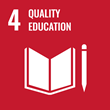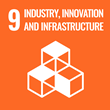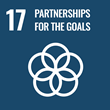Project information
CIISB - Czech Infrastructure for Integrative Structural Biology
(CIISB)
- Project Identification
- LM2023042
- Project Period
- 1/2023 - 12/2026
- Investor / Pogramme / Project type
-
Ministry of Education, Youth and Sports of the CR
- Large Infrastructures for Research, Development and Innovation
- MU Faculty or unit
- Central European Institute of Technology
- Project Website
- https://www.ciisb.org/
- Cooperating Organization
-
Institute of Biotechnology CAS
- Responsible person Ing. Jan Dohnálek, PhD.
The Czech Infrastructure for Integrative Structural Biology (CIISB) is a distributed national infrastructure, which consists of two nodes, one represented by CEITEC (Central European Institute of Technology, Brno) and second by BIOCEV (Biotechnology and Biomedicine Centre of the Academy of Sciences and Charles University, Vestec near Prague). CIISB offers access to 10 core facilities; five of them are part of the Centre of Structural Biology and one of the Mendel Centre of Genomics and Proteomics of Plants of CEITEC Masaryk University and four of the Centre of Molecular Structure of the Institute of Biotechnology AS CR in the BIOCEV Centre.
All CIISB core facilities are in the full operational phase. Projects as OP RDI (Start-up) supported the construction phase, and the built capacities were made available by both CIISB nodes in the form of Open Access to internal and external users. In its construction phase, CIISB (2011-2015) was the Associated National Center of the pan-European research infrastructure INSTRUCT. In 2016, following the completion, putting into operation, and subsequent international evaluation, CIISB became a fully-fledged Instruct-CZ Centre for this distributed infrastructure.
Sustainable Development Goals
Masaryk University is committed to the UN Sustainable Development Goals, which aim to improve the conditions and quality of life on our planet by 2030.
Publications
Total number of publications: 130
2025
-
A Bambusuril Receptor Binds Charge Diffuse Anions in Water at Picomolar Concentrations
Angewandte Chemie International Edition, year: 2025, volume: 64, edition: 37, DOI
-
AFM application across the life sciences field and its combination with special techniques
Year: 2025, type: Conference abstract
-
Anti-Cancer Potential of a new Derivative of Caffeic Acid Phenethyl Ester targeting the Centrosome
Redox Biology, year: 2025, volume: 81, edition: April 2025, DOI
-
Automated Engineering Protein Dynamics via Loop Grafting: Improving Renilla Luciferase Catalysis
ACS Catalysis, year: 2025, volume: 15, edition: 4, DOI
-
Creatine kinase B, a downstream effector of c-Myb, controls migration of osteosarcoma cells via regulation of N-cadherin
Cancer Cell International, year: 2025, DOI
-
CRISPR-Cas10-Assisted Structural Modification of Staphylococcal Kayvirus for Imaging and Biosensing Applications
ACS Synthetic Biology, year: 2025, volume: 14, edition: 8, DOI
-
Cyclodextrin-Based Metal-Organic Framework as an Application Platform for Bioactive Ruthenium(III) Complexes
Inorganic Chemistry, year: 2025, volume: 64, edition: 22, DOI
-
Dual-organoid biosensor for monitoring cardiac conduction disturbances in vitro
-
Dynamics of bacterial biofilm development imaged using light sheet fluorescence microscopy
BIOCHEMISTRY AND BIOPHYSICS REPORTS, year: 2025, volume: 43, edition: aug, DOI
-
Engineering Dehalogenase Enzymes Using Variational Autoencoder-Generated Latent Spaces and Microfluidics
JACS AU, year: 2025, volume: 5, edition: 2, DOI



